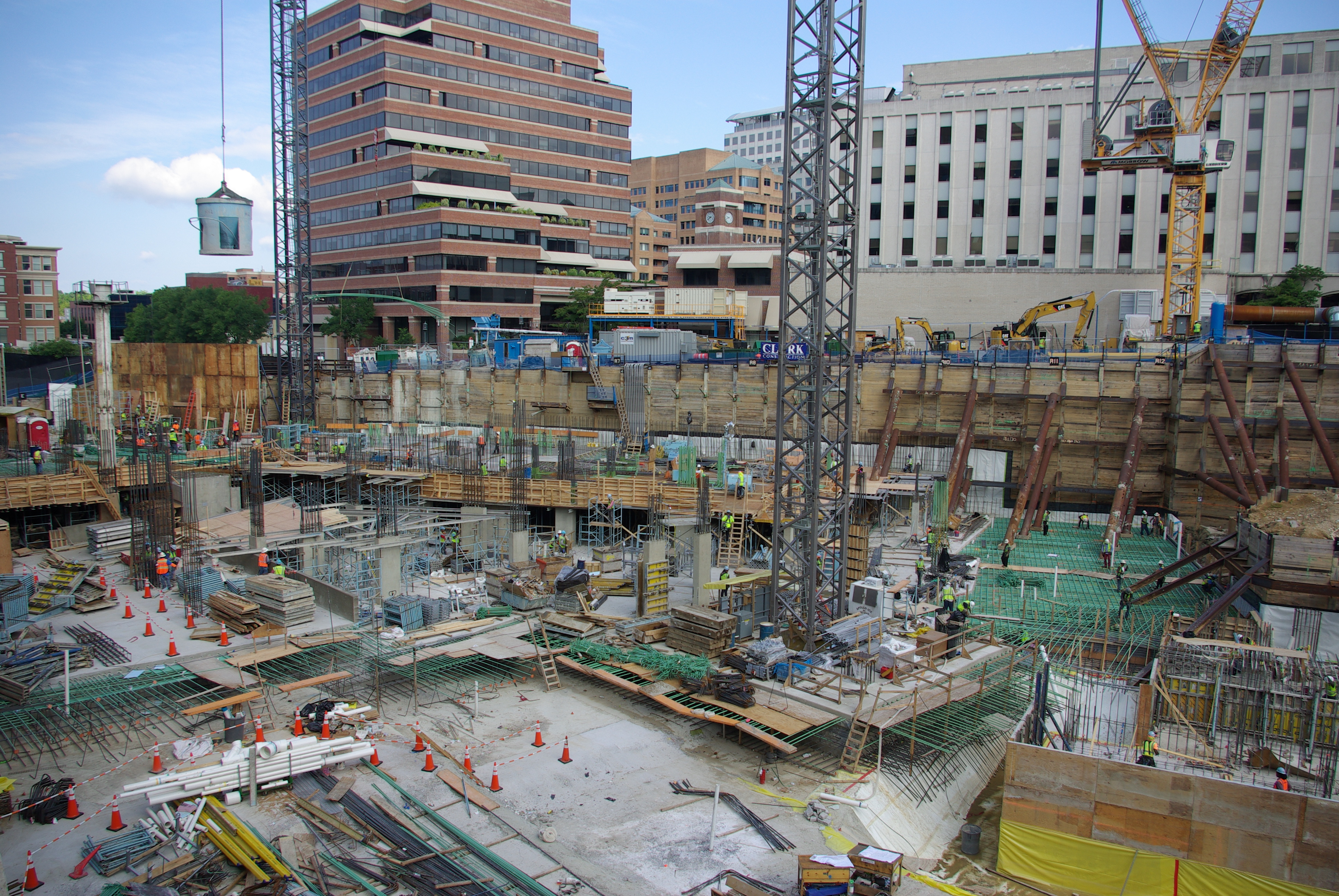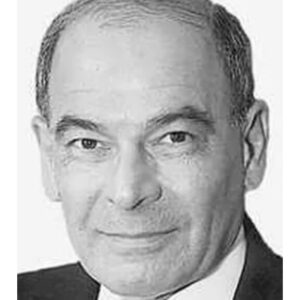Frank DeFilippo: Purple Line P3 Could Eat Our Lunch and Leave Maryland Scraps

“It was a one-eyed, one-horned, flyin’ purple people eater
(One-eyed, one-horned, flyin’ purple people eater)
A one-eyed, one-horned, flyin’ purple people eater
Sure looks strange to me (one eye?)”
The Purple People Eater
Sheb Wooley, 1958
If Maryland’s Purple Line fiasco offers an object lesson, it is that less is not more. It’s still less. Reducing bridge and road tolls, fees, and fuel taxes might be good politics in the short term, but bad transportation policy in the long view.
The state is about to pay a high price either way, a settlement or a bailout, because of Gov. Larry Hogan’s (R) shambolic policies on taxes. He has depleted Maryland’s transportation fund to dangerously low levels which forced him to enter into a public-private partnership, a risky arrangement that has a history of collapsing and leaving governments stuck with the debt.
And it comes at a time when the gas tax revenue stream has been nearly drained by the covid-19 quarantine and limited vehicle use. An oil and gas glut have driven prices down to an extended low, hanging out at around $38 a barrel, and an overflow of gas has drowned out storage space.
Revenues have also slowed to a trickle along with gasoline disuse. (The appropriate state agency for obtaining actual numbers, the Department of Legislative Services, is closed until further notice, according to a recording, presumably because of the pandemic.)
Summer travel appears limited, if not severely restricted, by a sudden spike in coronavirus cases along with a growing number of states re-imposing travel bans and stay-at-home orders. Maryland has traditionally been a fill-up state for motorists traveling both north and south, a seasonal boost in revenue for Maryland’s unique transportation fund.
But while Hogan has reduced fees for users in other areas of the state, the MTA has increased transit fares in the Baltimore area where public transportation is a necessity. The Hogan Administration also deep-sixed the proposed expansion of the Baltimore Metro system and shifted the allotted funding to road-building in the outlying counties where much of Hogan’s original “Change Maryland” constituency lives.
What’s more, Maryland carries the additional fiscal burden of supporting two aging subway systems, the Washington Metropolitan Area Transit Authority, to which it contributes in partnership with Virginia and the District, and the Baltimore Metro System.
Both require heavy state subsidies to supplement fare box revenue, a further strain on the transportation fund and revenue losers during the pandemic closures. And don’t forget the MARC commuter trains, which also rely on transportation funds in addition to ticket fees.
Yet incomplete, the Purple Line is a $2 billion, 16-mile light rail connecter that would run from Bethesda, in Montgomery County, and New Carrolton, in Prince George’s County. At stake, in the standoff between the state and the consortium of private partners overseeing construction of the project, is $775 million in costs related to delays and who will pay them. The private partners have notified the state that they intend to abandon the project if the state does not pony up the money.
To students of public-private partnerships (also known as 3Ps and P3s) and other hobbyists who follow PPPs, the threat and the financial collapse of a massive public project is a familiar one and a reminder of their toxic effect on public policy. No matter what happens, the taxpayers get stiffed with the bill. Hogan either didn’t do his homework, or he ignored the findings. A refresher:
More than a decade ago, the state of Indiana sold a 157-mile toll road to a private venture for a lump sum payment of $3.8 billion. The road lost $260 million a year later, the private consortium was unable to make the debt payment and the state almost got stuck with paying off the bonds. A second private consortium bailed out the deal for $5.7 billion with 66 years left on the lease. Tolls skyrocketed.
Illinois turned its lottery over to private managers but cancelled the arrangement after three years when revenues fell $500 million behind projections. Ditto the states of New Jersey and Indiana when lottery revenues failed to live up to expectations and the private management experiment.
With the arrival of that bad news, Pennsylvania put aside any thoughts of turning over what at the time was the nation’s most successful lottery to private managers. But the Keystone State did put the Pennsylvania Turnpike, the nation’s oldest, up for bid in 2008 and the winners agreed to advance $12.8 billion for a 75-year lease on the toll road that traverses the state. The state, however reconsidered the idea and backed away. Nonetheless, tolls on the turnpike have gone up every year since 2009 at a rate of about 6 percent a year.
The Intercounty Connector, the variably priced toll road linking Montgomery and Prince George’s counties, has been an under-performing financial flop, with revenues running far below projections. The so-called ‘Lexus Lanes” in Virginia have produced commuter backlash because of their excessive rates that are tagged to traffic volume – the more cars, the higher the tolls.
And Maryland’s one-of-a-kind transportation fund is further short-changed for a couple of avoidable reasons: Gov. Robert L. Ehrlich Jr. (R) introduced the use of GARVEE bonds to fund transportation projects, i.e., the borrowing of money against future federal highway funding; and Hogan has cut tolls, which help defray transportation bonds. (Bonds have a 1×10 borrowing ratio. Every dollar in the transportation fund will leverage $10 in bonding capacity.)
And so, here we are, Hogan forgetting nothing, for having learned nothing.
Back in 1949, the mandarins at Baltimore’s City Hall were flummoxed by the city’s post-World War II population growth and the mass arrival of the automobile. They began tearing up trolley tracks to make way for cars.
They also summoned Robert Moses, then regarded as New York’s master planner, to visit Baltimore and offer his advice. Moses viewed a map of the city, stroked his chin and said words to the effect: “This is ridiculous. You should have a highway across the city from east to west,” his finger etching a horizontal slash across the width of the map.
Thus was born the star-crossed East-West Expressway, which loomed over Baltimore like a civic curse for nearly two decades until the idea was finally abandoned in 1967 by the incoming administration of Spiro T. Agnew.
Opposition to the East-West Expressway launched the political career of Barbara Mikulsi, from community organizer, City Council, the House of Representatives and, finally, the U.S. Senate. Mikulski’s battle cry was that the expressway would destroy everything in its path, including her Fells Point neighborhood and others from the road’s beginning to end – just as Moses’ bulldozers did in New York.
But after Moses’ visit, the city plowed ahead with planning and the initial stages of the expressway construction. Berms, piles of rubble and unfinished bridge structures still present eyesores in sections of West Baltimore where the roadwork initially began.
Like Alaska’s proposed $398 million bridge to nowhere, Baltimore has its very own expressway path that leads to dead ends and dirt banks.
Soon, Montgomery County could have a graveyard of artifacts of a light rail line that never got on track.




 Creative Commons Attribution
Creative Commons Attribution